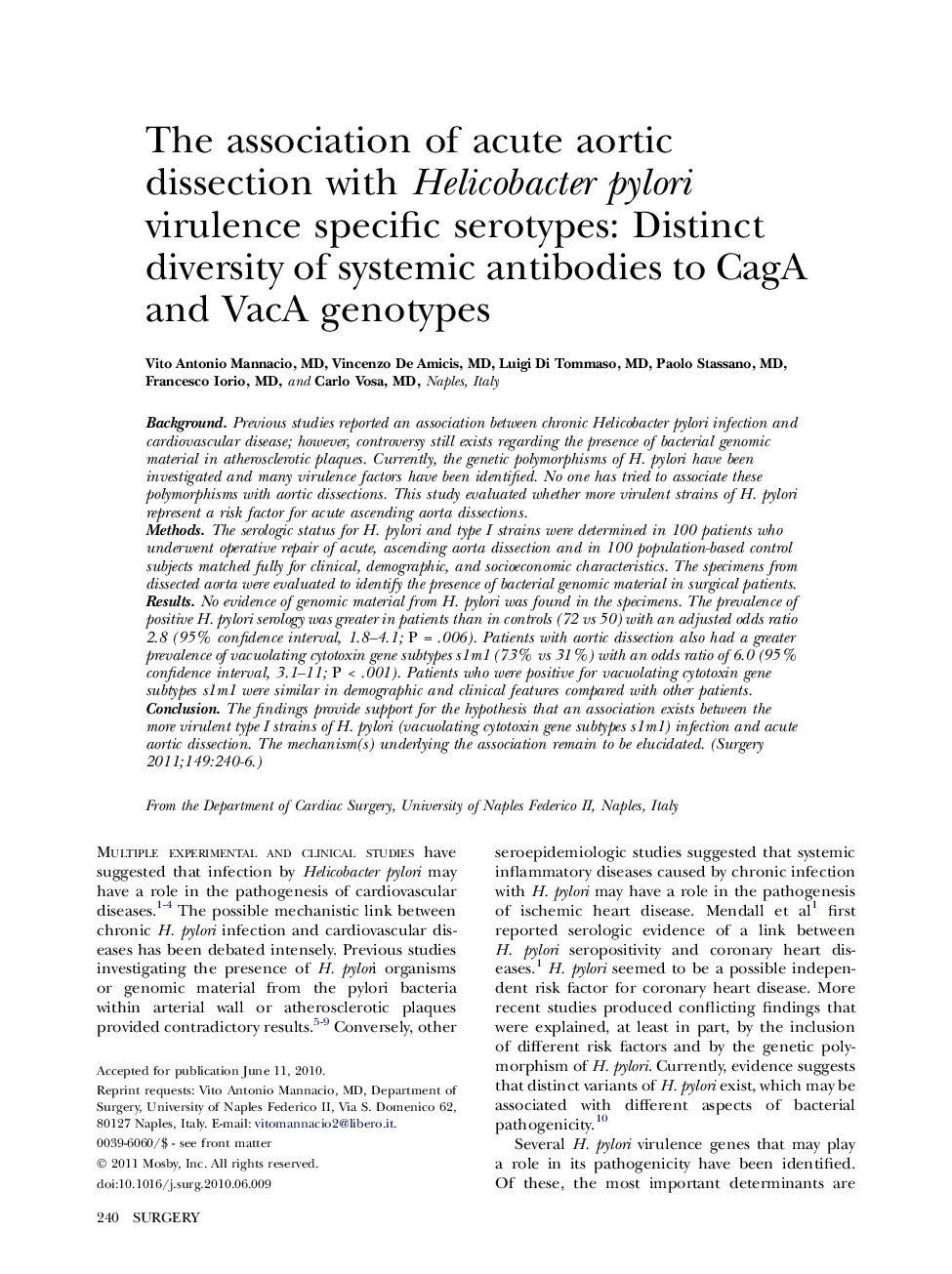| کد مقاله | کد نشریه | سال انتشار | مقاله انگلیسی | نسخه تمام متن |
|---|---|---|---|---|
| 4308839 | 1289292 | 2011 | 7 صفحه PDF | دانلود رایگان |

BackgroundPrevious studies reported an association between chronic Helicobacter pylori infection and cardiovascular disease; however, controversy still exists regarding the presence of bacterial genomic material in atherosclerotic plaques. Currently, the genetic polymorphisms of H. pylori have been investigated and many virulence factors have been identified. No one has tried to associate these polymorphisms with aortic dissections. This study evaluated whether more virulent strains of H. pylori represent a risk factor for acute ascending aorta dissections.MethodsThe serologic status for H. pylori and type I strains were determined in 100 patients who underwent operative repair of acute, ascending aorta dissection and in 100 population-based control subjects matched fully for clinical, demographic, and socioeconomic characteristics. The specimens from dissected aorta were evaluated to identify the presence of bacterial genomic material in surgical patients.ResultsNo evidence of genomic material from H. pylori was found in the specimens. The prevalence of positive H. pylori serology was greater in patients than in controls (72 vs 50) with an adjusted odds ratio 2.8 (95% confidence interval, 1.8–4.1; P = .006). Patients with aortic dissection also had a greater prevalence of vacuolating cytotoxin gene subtypes s1m1 (73% vs 31%) with an odds ratio of 6.0 (95% confidence interval, 3.1–11; P < .001). Patients who were positive for vacuolating cytotoxin gene subtypes s1m1 were similar in demographic and clinical features compared with other patients.ConclusionThe findings provide support for the hypothesis that an association exists between the more virulent type I strains of H. pylori (vacuolating cytotoxin gene subtypes s1m1) infection and acute aortic dissection. The mechanism(s) underlying the association remain to be elucidated.
Journal: Surgery - Volume 149, Issue 2, February 2011, Pages 240–246